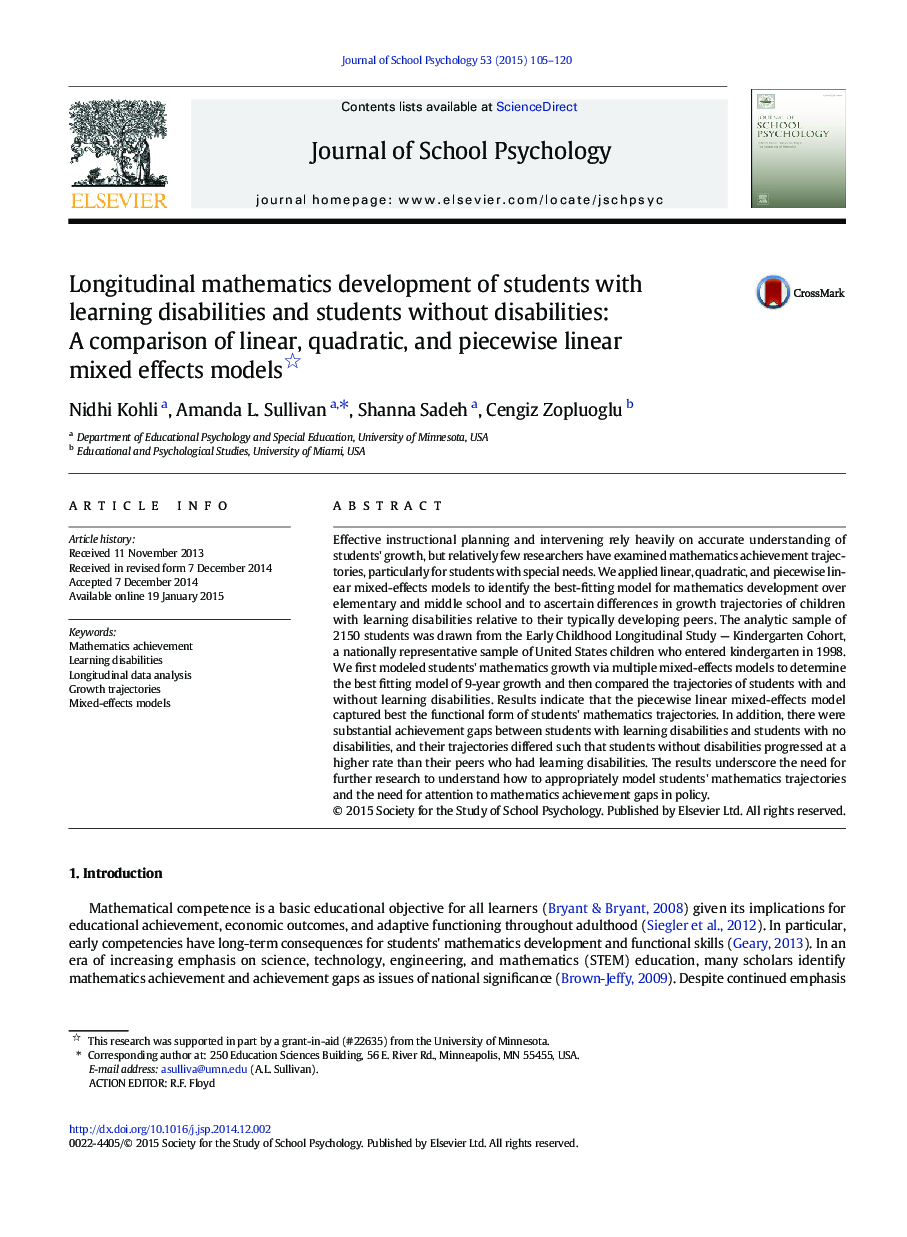| Article ID | Journal | Published Year | Pages | File Type |
|---|---|---|---|---|
| 363557 | Journal of School Psychology | 2015 | 16 Pages |
Effective instructional planning and intervening rely heavily on accurate understanding of students' growth, but relatively few researchers have examined mathematics achievement trajectories, particularly for students with special needs. We applied linear, quadratic, and piecewise linear mixed-effects models to identify the best-fitting model for mathematics development over elementary and middle school and to ascertain differences in growth trajectories of children with learning disabilities relative to their typically developing peers. The analytic sample of 2150 students was drawn from the Early Childhood Longitudinal Study — Kindergarten Cohort, a nationally representative sample of United States children who entered kindergarten in 1998. We first modeled students' mathematics growth via multiple mixed-effects models to determine the best fitting model of 9-year growth and then compared the trajectories of students with and without learning disabilities. Results indicate that the piecewise linear mixed-effects model captured best the functional form of students' mathematics trajectories. In addition, there were substantial achievement gaps between students with learning disabilities and students with no disabilities, and their trajectories differed such that students without disabilities progressed at a higher rate than their peers who had learning disabilities. The results underscore the need for further research to understand how to appropriately model students' mathematics trajectories and the need for attention to mathematics achievement gaps in policy.
